.
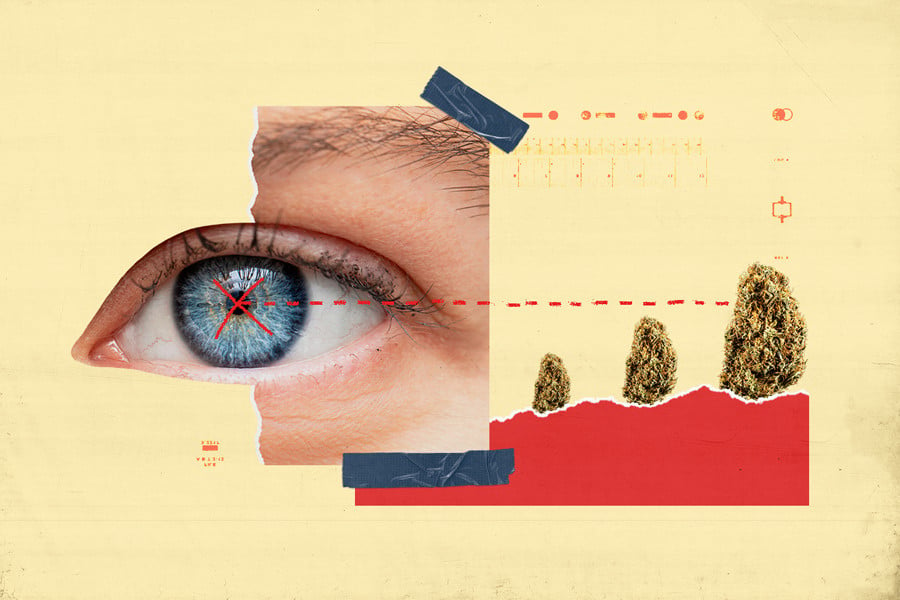
How to Identify Laced and Sprayed Weed
Although not all contaminated cannabis is that dangerous—it's always worth avoiding. Some dealers will spray weed with additives to make it more appealing and profitable, and a minority will lace their weed with drugs to make it appear more potent. Keep reading to find out more.
All industries try to find ways to make their products appear better whilst cutting costs and increasing revenue. And, when an industry is illegal or exists in a gray area, the lack of regulation and oversight means that anyone can add whatever they want to a product with little accountability or repercussions.
Sadly, this is true of the cannabis industry. Some growers and dealers may lace or spray weed to make it seem stronger, more attractive or denser. Often, this is merely a cosmetic intervention and is mostly harmless. Still, there are instances when it can pose a significant risk to whoever consumes the contaminated bud.
Keep reading as we explain what you need to know about sprayed and laced weed and see whether there are any ways to detect it.
Contents:
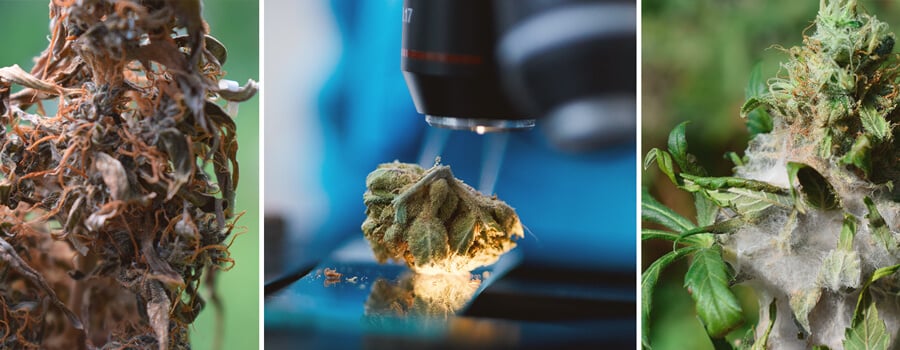
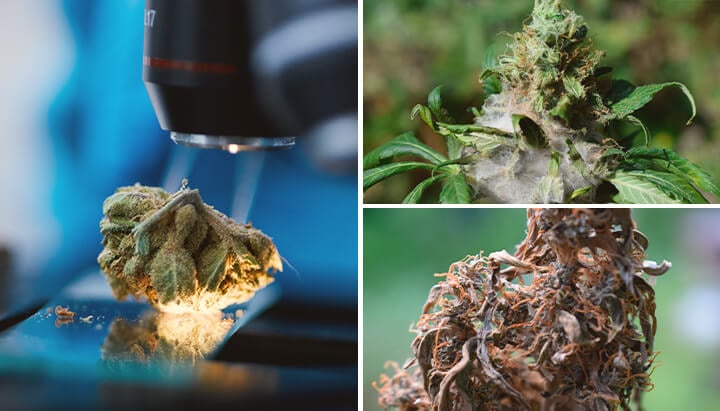
How Common is Contaminated Weed?
Contaminated cannabis, in one form or another, is sadly quite common. If you buy weed on the street, the chances of contamination are fairly high. Least nefariously, contaminants might include compounds such as pesticides or fungi or may simply be dirt and dust. However, even contamination as mild as dirt and dust can pose significant health risks, especially for those with conditions such as allergic asthma.
Sometimes, however, you may come across weed that has either been laced or sprayed, meaning that it could contain other drugs or toxic compounds designed to increase the weight or make it look and smell more appealing. Cannabis treated this way can be extremely dangerous, causing unpredictable and sometimes fatal effects.
What is Laced Weed?
Laced cannabis is cannabis that has had other psychoactive substances added to it. Often, growers or dealers will do this to make it seem much more potent than it really is. Alarmingly, in the US, there are increasing examples of fentanyl-laced weed. Even trace amounts of fentanyl can have an overwhelming effect, making the weed seem incredibly potent. Fentanyl is also extremely dangerous, and overdoses are common, so weed laced with fentanyl is a real danger.
Otherwise, dealers might lace cannabis with synthetic cannabinoids, such as those added to drugs like K2 and Spice. There are numerous synthetic cannabinoids available, and their legal status is, depending on your juristiction, unclear. However, what is common among them is that they are generally much more potent than natural THC and can quickly lead to addiction and psychosis.
All this being said, thankfully, laced weed is relatively uncommon. Weed laced with harder drugs, such as fentanyl, is scarce as most dealers understand the dangers and don't want to kill their customers or face the legal repercussions. And if you live outside the US, it's even less likely.
It's unclear how frequently you'll find cannabis laced with synthetic cannabinoids. Still, it's likely to become more common as it's an effective way to make low-quality weed appear stronger and poses little risk to the dealer. With the rules on synthetic substances constantly changing, it's easier for unscrupulous dealers to skirt the edge of the law.
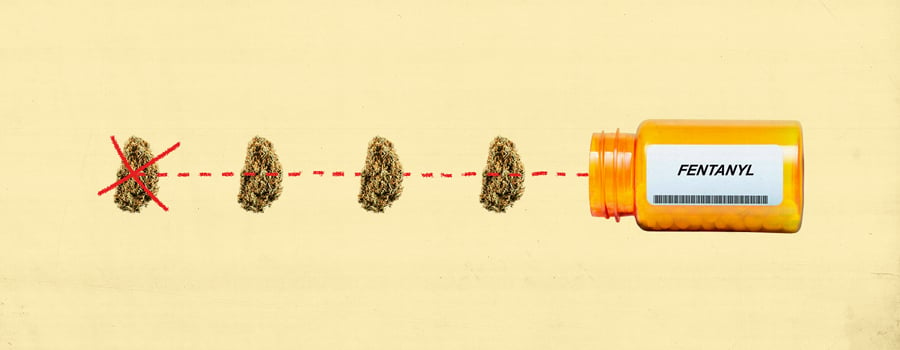
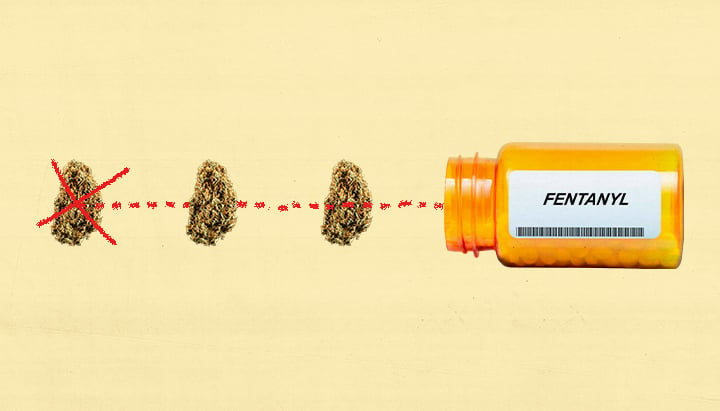
What is Sprayed Weed?
Sprayed weed is cannabis that has been sprayed with an optional additive. Most commonly, additives are sprayed onto weed to increase weight, add artificial terpenes, change the smell, or alter the appearance. The intention here is not to modify the effects or harm the user but only to improve profits and make the cannabis appear of a higher quality than it really is.
However, some of the compounds used to achieve these effects can be harmful. Fake terpenes are often poorly understood and may affect the human respiratory system. Smoking already has health implications without adding unknown, artificial compounds to the mix.
Worst of all, some dealers will use just about anything they can get their hands on to increase the weight of their cannabis, including contaminants such as glue and glass—if you're unlucky. Additives such as these are obviously hazardous, and you should avoid them at all costs.
Laced Weed vs Sprayed Weed: Are They the Same Thing?
Sprayed and laced weed are distinctive, but the terms are often used interchangeably. On the whole, "laced" refers to weed with other drugs added to it to change the effects. "Sprayed", meanwhile, refers to cannabis that has had additives applied to alter the weight, smell or appearance.
In general, laced weed poses a greater health risk because the additional compounds are guaranteed to affect the user—that's why they're there. Sprayed weed, on the other hand, isn't supposed to affect the user. Nonetheless, it often can, with effects ranging from mild and unnoticed to severe (for instance, allergic reactions).
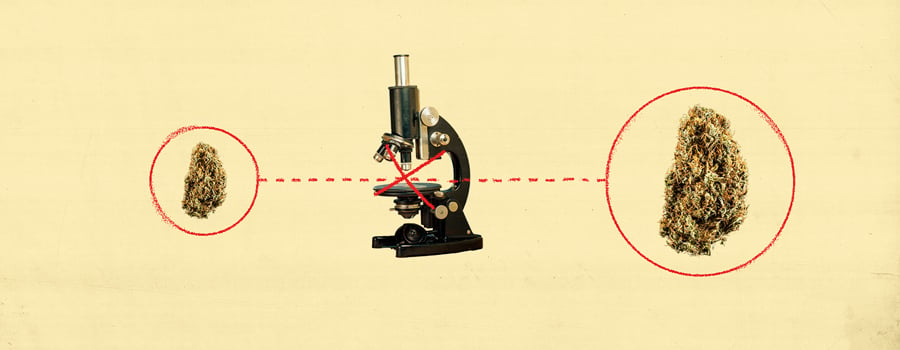
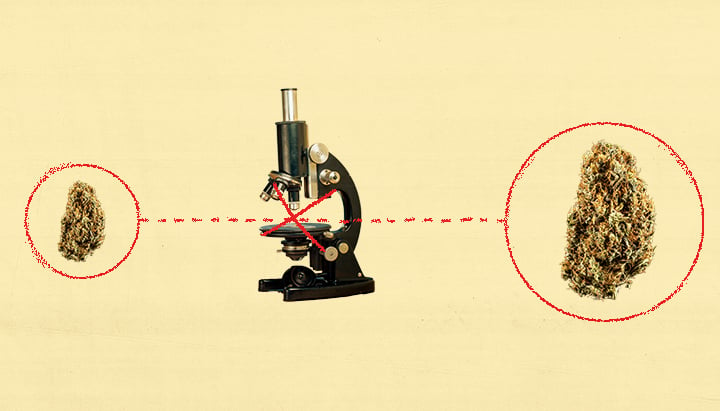
How to Tell if Weed is Contaminated
Trying to figure out whether or not your weed is sprayed or laced can be difficult, and it's often tough to know for sure—at least without a laboratory at your disposal. Still, there are some telltale signs to look out for. These won't tell you exactly what's wrong with your weed, but they will let you know that something's probably been added.
Note: Just because you can't see or smell anything that looks off doesn't mean your weed isn't laced or sprayed. Always approach weed from an unknown source cautiously.
How to Identify Laced Weed
If your cannabis has unusually strong or unexpected effects, it may have been laced with something. Symptoms of laced weed include:
- Pinpoint pupils (opioids)
- Reduced heart rate (opioids)
- Reduced breathing (opioids)
- Lack of responsiveness (opioids)
- Increased heart rate (synthetic cannabinoids)
- Racing thoughts and anxiety (synthetic cannabinoids)
- Confusing thought patterns (synthetic cannabinoids)
- Powerful effects that wear off within half an hour (synthetic cannabinoids)
- Onset of extreme effects within a few tokes, sometimes even one (synthetic cannabinoids)
As you can probably tell, these effects are often present when smoking regular weed—THC does most of the above. So, before deciding you've smoked laced weed, take a breath and ask yourself if you're simply panicking.
Ideally, you won't be smoking laced weed, so you'll never have to encounter the adverse effects. Unfortunately, identifying laced weed with your eyes or nose can be really tough. However, synthetic cannabinoids usually give off a distinct, plastic-like smell when they burn. If you light up and it smells like plastic, stub it out and throw it away.
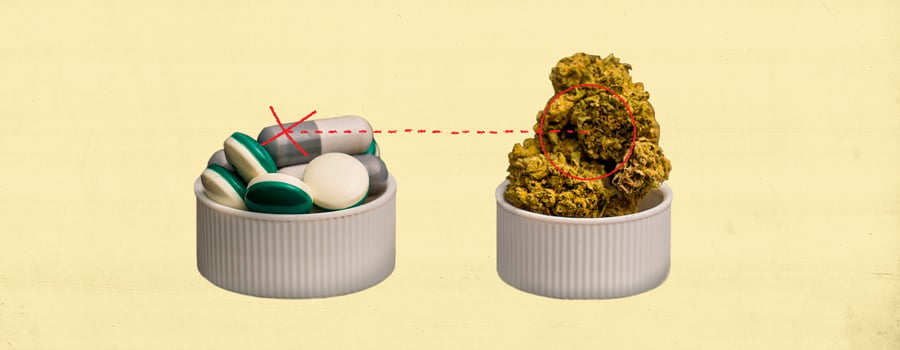
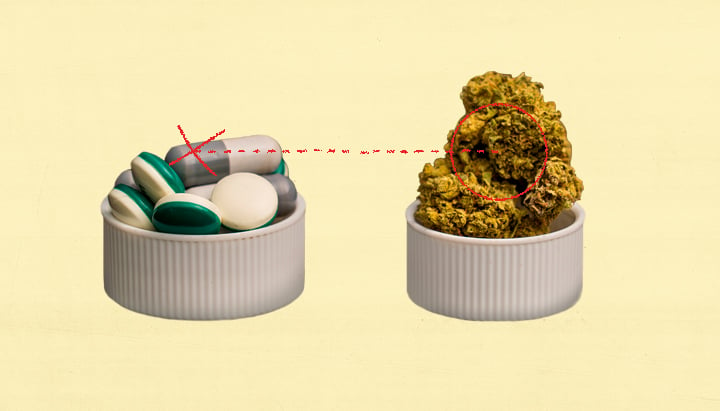
How to Identify Sprayed Weed
Sprayed weed can be equally hard to identify with your nose or eyes—but it's often easier to identify than laced weed. Sprayed weed could contain just about anything, so you'll need to look out for the following traits:
- Appearing unbelievably resinous
- Smelling of chemicals
- Tasting artificial and harsh
- Generally looking or smelling off
- Buds are very hard, compact and shiny (indicates hair spray)
Tips for Avoiding Contaminated Cannabis
Avoiding weed that's been laced or sprayed is in your best interests, but depending on where you live and who you know, this can range from very easy to quite difficult. If you're stuck buying weed from a dealer on the street, your choices are limited. Regardless, if you suspect your weed is contaminated or laced, then you should try to find another source or stop until you can get hold of some unadulterated herb.
It's really worth finding a trusted source. Not only will this give you peace of mind regarding contaminants, but you'll know exactly what it is you're consuming.
Start Growing Your Own Cannabis
If you have more choice, you should try to either source your weed from a grower you trust, from a trusted dispensary or club or, why not, simply grow it yourself. Growing weed yourself is, without a doubt, the best way to ensure that it's pure, as you control the cultivation process from start to finish. And it's a lot of fun!
Sprayed and Laced Weed: Avoid It!
Unfortunately, cannabis laced with drugs or sprayed with additives to improve profitability is on the rise. Thankfully, though, for most people, coming across weed laced with drugs is unlikely, and only the most reckless and least trustworthy of dealers would do this, as it's dangerous and has little benefit.
On the flip side, weed sprayed with something to make it look more appealing, smell better or weigh more is much more likely. Contamination at this level can happen anywhere along the chain, from the grower to the final dealer. Given this, you shouldn't assume that their weed is clean just because the person appears trusted.
Be on the lookout for contamination of all kinds, and if you suspect your weed is impure, then it's best just to discard it. It may hurt to throw away visually impressive buds, but the consequences could be severe if you don't.
































